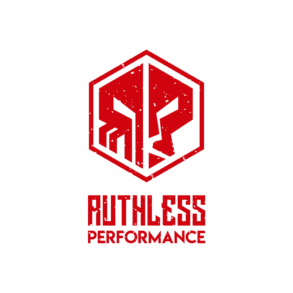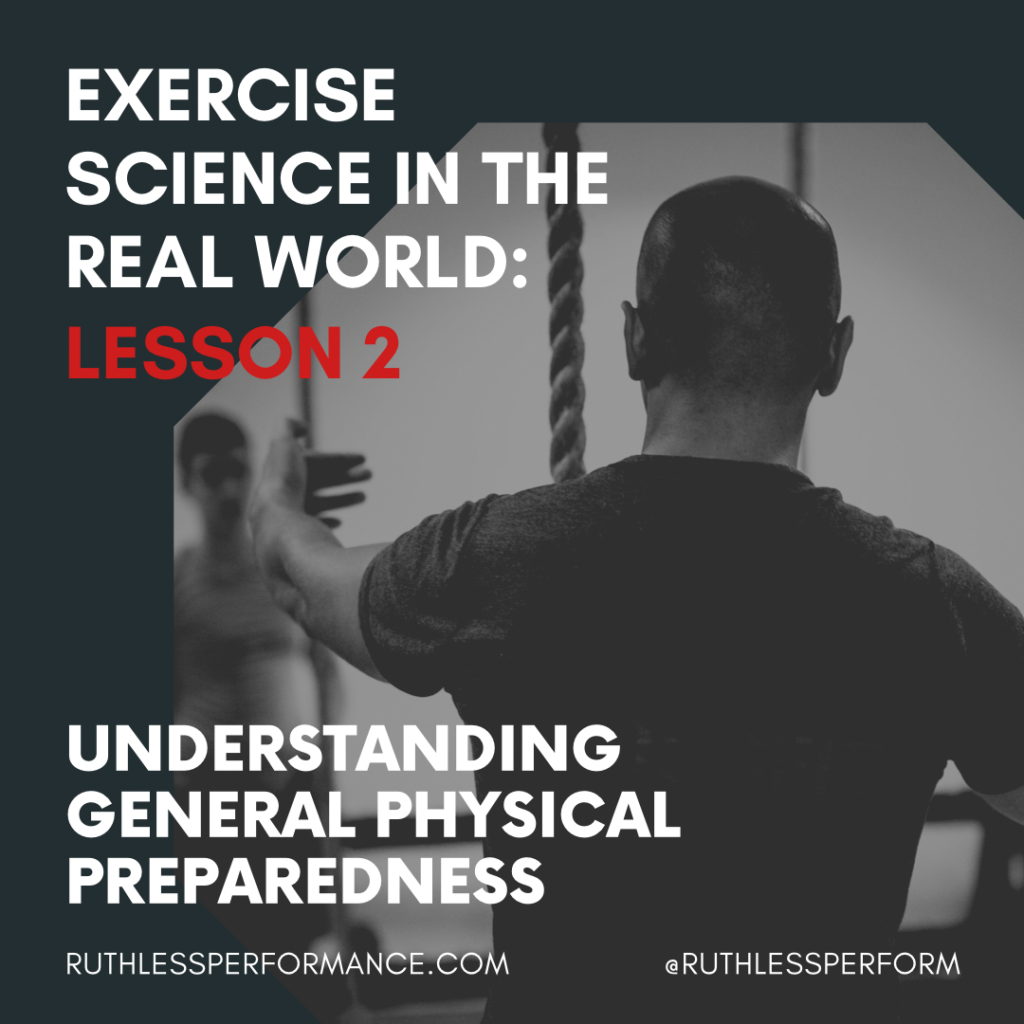**Editor’s Note: This series comes from current Ruthless Performance Intern and Assistant Strength & Conditioning Coach, Keith Lowery. Keith is a senior exercise science student at Bloomsburg University, which has an affiliate agreement with Ruthless. As senior exercise science students complete their 4-year program, they are required to complete an arduous semester-long internship. These lessons will be presented weekly as interns gain real-world experience in the realm of strength and conditioning during crucial on-the-job education.**
Understanding General Physical Preparedness
General Physical Preparedness or GPP for short, is the foundation of physical fitness all athletes must have to not only perform to their highest potential, but also to decrease their likelihood of sustaining an injury. One of the most important roles a strength coach performs is increasing their athletes GPP. General Physical Preparedness can be defined as the use of general exercise to increase an athlete’s overall strength and conditioning. All athletes need this foundation before moving into Sports Specific exercises as they will not be prepared nor progress as efficiently if they did not have a GPP base.
General Physical Preparedness is accumulated during the offseason of athletics, for football players, strength and conditioning coaches will start their athletes with simple variations of the squat, bench, and deadlift to maintain and build upon the strength the athletes have from the past season. Exercises like the goblet squat, standing overhead press, and kettlebell deadlift are basic exercises that can be used to increase an athlete’s GPP.
It is important to remember that athletes are NOT highly trained when it comes to the weight room. Their overall strength can be increased by using simple exercises because of their low training age. Training age is the term used to describe how long someone has been training currently. This only applies to how long one has been training without breaks. It does not apply to someone that has trained for three years in the past but then took another two years off of training. This person would be considered a novice. Novices are the easiest to work with as their adaptation to exercises and repetition ranges is low. This means the athlete can gain muscle mass and strength even through higher repetition ranges like 20 reps because they have never been shown that stimuli.
This chart below highlights what rep ranges are ideal for strength, power, hypertrophy, and Muscular Endurance.
(William A. Sands, Jacob J. Wurth, Dr. Jennifer K. Hewit, 2012)
Start your athletes off with low weights for higher rep ranges to allow them to work on the proper technique. They will still gain strength as they learn the technique because they have never been shown it. This strength is gained through actual hypertrophy of the muscles worked and through neural pathways. As the body becomes more accustomed to the movement pattern, it becomes more efficient at activating the muscles used allowing more strength development. This can be shown through the “nooby gain” phase all athletes and gym goers go through when they start working out.
As a strength and conditioning coach it is important to stick to the basics using simple variations of the squat, bench, and deadlift while applying progressive overload. Remember sport coaches use sports specific exercises already when the team practices together. Giving your athletes a base of GPP will give them a step ahead on the practice field and in competition.
Works Cited
William A. Sands, Jacob J. Wurth, Dr. Jennifer K. Hewit. (2012). Basics of Strength and Conditioning Manual. Nsca.com. https://www.nsca.com/contentassets/116c55d64e1343d2b264e05aaf158a91/basics_of_strength_and_conditioning_manual.pdf


Pingback: Featured Fitness Content: Volume 93 – Ruthless Performance